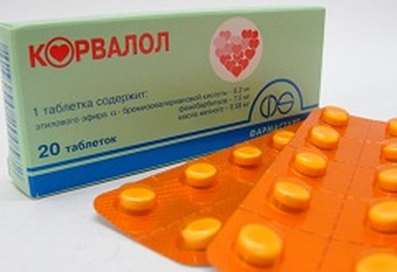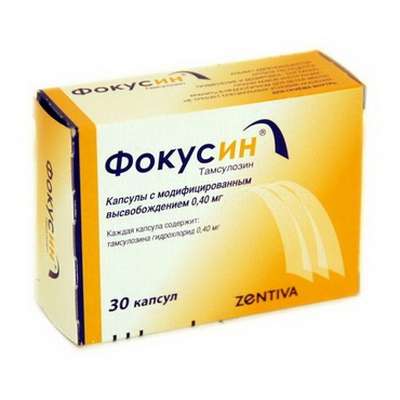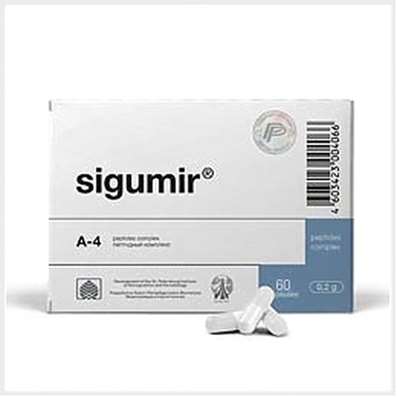Instruction for use: Febricet
I want this, give me price
Active substance Paracetamol + Pheniramine + Ascorbic acid
ÀÒÕ N02BE51 Paracetamol in combination with other drugs, except for psycholeptics
Pharmacological group
Anilides in combinations
Nosological classification (ICD-10)
J00 Acute nasopharyngitis [runny nose]
Viral rhinitis, Inflammation of the nasopharynx, Inflammatory diseases of the nose, purulent rhinitis, Nasal congestion, Nasal congestion with colds and flu, The difficulty of nasal breathing, The difficulty of nasal breathing for colds, Difficulty in nasal breathing, Difficulty in nasal breathing in colds, nasal, hypersecretion, cold, ARI with rhinitis phenomena, coryza, Acute rhinitis of various origins, Acute rhinitis with thick purulent mucous exudate, Acute nasopharyngitis, Swelling of the mucosa of the nasopharynx, Rhinitis, rhinorrhea, Infectious-inflammatory diseases of ENT organs, heavy cold, rhinopharyngitis, nasopharyngitis
J06 Acute upper respiratory infections of multiple and unspecified
Frequent colds viral diseases, Infections of the upper respiratory tract, Acute respiratory disease influenza character, for colds Pain, Acute colds,Cold, respiratory infection,Seasonal colds, Pain in infectious and inflammatory diseases of the upper respiratory tract, Bacterial infections of the upper respiratory tract, Bacterial respiratory infections, Viral disease of the respiratory tract, Viral respiratory tract infections, Inflammatory disease of the upper respiratory tract, Inflammation of the upper respiratory tract disease, Inflammation of the upper respiratory tract illness with difficult sputum, Inflammatory airway disease, Secondary infections with colds, Shortness of sputum in acute and chronic respiratory diseases, Upper respiratory tract infection, Infections of the upper respiratory tract, Respiratory Tract Infections, Infections of the respiratory tract and lungs, Infectious-inflammatory diseases of the upper respiratory tract, Infectious-inflammatory diseases of the upper respiratory tract and ENT-organs, Infectious-inflammatory diseases of the upper respiratory tract in children and adults, Infectious-inflammatory diseases of the upper respiratory tract, Infectious inflammation of the airways,respiratory infection, Qatar upper respiratory tract, Catarrh of the upper respiratory tract, Catarrhal disease of the upper respiratory tract, Catarrhal symptoms of the upper respiratory tract, Coughing with a cold, SARS, ARI, ARI with rhinitis phenomena, Acute respiratory infection, Acute infectious and inflammatory disease of the upper respiratory tract, Acute respiratory disease, Sore throat or nose, Respiratory viral infections, Respiratory diseases, Respiratory infections, Recurrent respiratory infections, Secondary infection with influenza, cold in the chest, Feverish condition with flu usitis, acute sinusitis, genyantritis, purulent sinusitis
J11 Influenza, virus not identified
Flu, Influenza in the early stages of the disease, Flu in children, cold in the chest, Begins flu-like condition, Acute disease parainfluenza, parainfluenza, parainfluenza state, influenza epidemics, The pains of the flu, Influenza
R50.0 Fever with chills
High fever, Heat, Chills, elevated temperature, hyperthermia, Prolonged fever, Feverish syndrome, Fervescence, Increased body temperature in infectious and inflammatory diseases, fever Symptoms, febrile syndrome, Febrile state, Fever, Fever in infectious and inflammatory diseases, Fever with SARS, Fever with cold, Fever for colds, febrility, Feverish condition with flu, Feverish state in infectious and inflammatory diseases , Feverish state of infectious diseases and in the postoperative period, Feverish condition for colds, Febrile of different genesis, Feverish syndrome on the background of infectious diseases, Feverish syndrome in infectious and inflammatory diseases, Feverish syndrome with colds, Feverish syndrome of different genesis, Increased temperature for colds, Increased temperature at catarrhal and infectious and inflammatory diseases, Increased body temperature in cold, etc., Increased body temperature in cold and other infectious and inflammatory diseases, Increased body temperature in cold and other infectious and inflammatory diseases, Fever during pregnancy, Fever with thrombocytopenia, Febrile reaction in blood transfusion
R52.9 Unspecified Pain
Pain after cholecystectomy, Pain shooting, Non-malignant pain, Obstetric and gynecological pain, Pain syndrome, Pain in the postoperative period, Pain in the postoperative period after orthopedic surgery, Pain of inflammatory genesis, Pain than cancer genesis, Pain syndrome after diagnostic procedures, Pain after surgery Diagnostic, Pain after surgery, Pain after orthopedic surgery, Pain after injuries, Pain after the removal of hemorrhoids, Pain at the non-rheumatic inflammation of nature, Pain in inflammatory lesions of the peripheral nervous system, Pain in diabetic neuropathy, Pain in acute inflammatory diseases of the musculoskeletal system, Pain when the tendon pathology, Pain smooth muscle spasm, Pain spasm of smooth muscles (renal and biliary colic, intestinal spasms, dysmenorrhea), Pain spasm of smooth muscles of internal organs, Pain spasm of smooth muscles of internal organs (kidney and biliary colic, intestinal spasms, dysmenorrhea), Pain in trauma syndrome, Pain with injuries and after surgical interventions, Pain in chronic inflammatory diseases of the musculoskeletal system, Pain with duodenal ulcer, Pain syndrome in gastric ulcer, Pain syndrome in gastric ulcer and duodenal ulcer, pain, Pain during menstruation, pain syndromes, painful condition, Painful foot fatigue, Sore gums when wearing dentures, Soreness of the cranial nerves exit points, Painful menstrual irregularities, Painful dressings, Painful muscle spasm, Painful teeth growth, Melosalgia, Pain in the area of the surgical wound, Pain in the postoperative period, Pain in the body, Pain after diagnostic procedures, Pain after orthopedic surgery, Pain after surgery, The pains of the flu, Pain in diabetic polyneuropathy, Pain for burns, Pain during sexual intercourse, Pain during diagnostic procedures, Pain during therapeutic procedures, for colds Pain, Pain in sinusitis, Pain in trauma, Pain traumatic, The pain in the postoperative period, Pain after diagnostic procedures, The pain after sclerotherapy, Pain after surgery, postoperative Pain, Pain postoperative and posttraumatic, posttraumatic pain, Pain when swallowing, Pain in infectious and inflammatory diseases of the upper respiratory tract, The pain of burns, The pain in traumatic muscle injury, Pain in trauma, The pain of tooth extraction, The pain of traumatic origin, Pain caused by spasm of smooth muscles, Expressed pain syndrome, Expressed pain syndrome, traumatic origin, Postoperative pain, Post-traumatic pain, Post-traumatic pain syndrome, Torpid pain, Traumatic pain, Traumatic pain, Mild pain, Moderately severe pain, Moderate pain, Polyarthralgia with polymyositis
Composition and form of release
Powder for solution for oral administration 1 pack.
paracetamol 500 mg
Pheniramine maleate 25 mg
ascorbic acid 200 mg
excipients: citric acid anhydrous; isomalt; saccharin sodium; aroma of lemon honey; Silica colloidal anhydrous dioxide
4 grams of powder in a bag of combined material; in a pack of cardboard 8 bags.
Description of dosage form
A box from white to yellowish white with a hint of honey and lemon.
The prepared solution is slightly turbid, with the smell of lemon and honey.
pharmachologic effect
Pharmacological action - antipyretic, analgesic, anti-allergic.
Pharmacodynamics
Combined drug. Paracetamol has antipyretic and analgesic effect: it reduces pain syndrome, which is observed in catarrhal diseases - sore throat, headache, muscle and joint pain, reduces heat. Pheniramine has an antiallergic effect: it eliminates the itching of the eyes, nose and throat, swelling and flushing of the mucous membranes of the nasal cavity, nasopharynx and paranasal sinuses, reduces rhinorrhea and lacrimation. Ascorbic acid (vitamin C) replenishes the increased demand for vitamin C for colds and flu, especially in the initial stages of the disease. Increases the body's resistance to infectious diseases.
Indication
Symptomatic treatment of colds, flu, ARVI (febrile syndrome, pain syndrome, rhinorrhea).
Contraindications
increased sensitivity to paracetamol and other components that make up the drug;
taking other drugs containing substances that are part of the Fabricet;
portal hypertension;
alcoholism;
pregnancy;
lactation period;
children's age (up to 15 years).
With caution: bronchial asthma, COPD, glucose-6-phosphate dehydrogenase deficiency, blood diseases, congenital hyperbilirubinemia (Gilbert syndrome, Dubin-Johnson and Rotor syndrome), erosive and ulcerative gastrointestinal lesions, hyperoxalaturia, hepatic and / or renal insufficiency, angle-closure glaucoma, hyperplasia prostate cancer.
Side effects
Allergic reactions (including skin rash, itching, urticaria, angioedema, anaphylactic shock), headache, dizziness, sleep disturbances, increased excitability, decreased speed of psychomotor reactions, nausea, vomiting, epigastric pain; dry mouth; retention of urine; paresis of accommodation; bronchial obstruction, anemia, thrombocytopenia, agranulocytosis.
With long-term use in large doses - hepatotoxic effect, hemolytic anemia, aplastic anemia, methemoglobinemia, pancytopenia, erosive-ulcerative lesions of the gastrointestinal tract, bleeding in the gastrointestinal tract, nephrotoxicity (papillary necrosis).
Interaction
Strengthens the effects of sedatives, ethanol. Antidepressants, antiparkinsonics, antipsychotics, phenothiazine derivatives - increase the risk of urinary retention, dry mouth, constipation. SCS increases the risk of developing glaucoma.
Paracetamol reduces the effectiveness of uricosuric drugs. Pheniramine, concomitantly prescribed with MAO inhibitors, or furazolidone, can lead to hypertensive crisis, agitation, hyperpyrexia.
With simultaneous administration of the drug with barbiturates, diphenine, carbamazepine, rifampicin and other inducers of microsomal oxidation (phenytoin, ethanol, phenylbutazone, tricyclic antidepressants), production of hydroxylated active metabolites increases and the risk of hepatotoxic action of paracetamol increases with small overdoses.
Inhibitors of microsomal oxidation (cimetidine) reduce the risk of hepatotoxic effects.
Dosing and Administration
Inside. Keep 1 sachet in a warm water and drink after the end of the rinse. Take the drug with a lot of liquid, 1-2 hours after eating.
If the doctor does not give other instructions, then when using the drug, the following dosages should be observed. Adults and children older than 15 years - up to 1 packet of poultry 2-3 times a day. The maximum daily dose is 3 sachets. Interval between reception - 4-6 hours.
In chronic renal failure (Cl creatinine 10 ml / min), the interval between doses of the drug should be more than 8 hours.
The maximum duration of treatment for children is 3 days.
Do not take the drug for more than 5 days without consulting a doctor.
Overdose
Conditioned, as a rule, paracetamol, manifested after taking more than 10-15 g of the latter. Possible: pallor of the skin, anorexia, nausea, vomiting; hepatonecrosis; increased activity of hepatic transaminases, increased PV.
In cases of overdose, it is necessary to urgently consult a doctor.
Treatment: gastric lavage followed by administration of activated charcoal; symptomatic therapy, the introduction of methionine 8-9 hours after an overdose and N-acetylcysteine - after 12 hours.
special instructions
During treatment should refrain from taking alcohol, sleeping pills and anxiolytic drugs. Do not take with other medicines containing paracetamol. Care should be taken when performing work that requires concentration of attention, increased speed of motor and mental reactions. If the symptoms do not go away within 3-5 days, consult a doctor.
storage Conditions
In a dry place, at a temperature of 15-25 ° C.
Keep out of the reach of children.
Shelf life
2 years.
Do not use after the expiry date printed on the package.

 Cart
Cart





